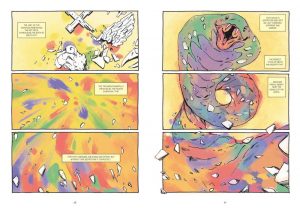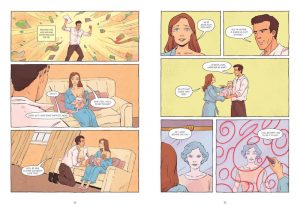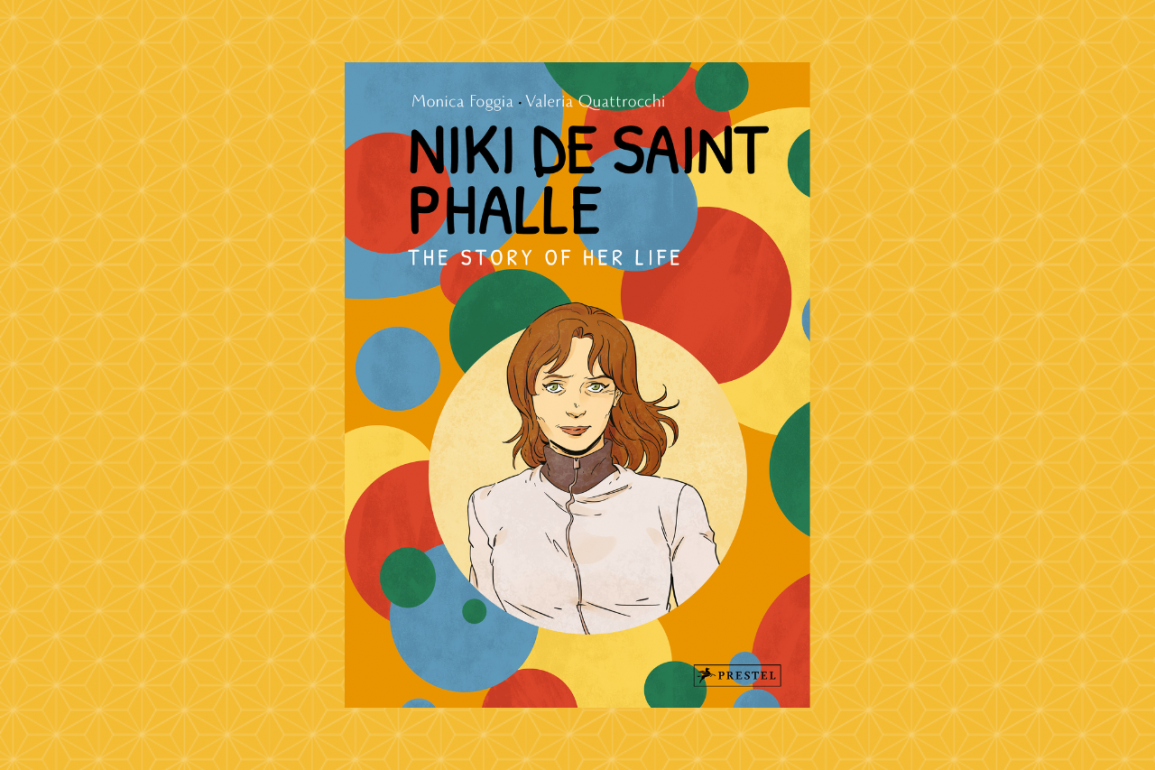Niki de Saint Phalle: The Story of Her Life – Women Talking had the pleasure of reviewing the fascinating book Niki de Saint Phalle: The Story of Her Life. This is the first graphic novel on the life of American artist Niki de Saint Phalle, which tells the story of how a self-taught artist became a worldwide sensation, a radical promoter of gender equality and a champion of social justice.

Throughout her career, she continually disrupted long-held conventions in art, and her iconoclastic approach to her identity and society at large made her an early and important voice to both the Feminist movement and the development of early Conceptual Art.
Few artists’ lives are as inspiring as that of Niki de Saint Phalle. While she started her career as a fashion model, a subsequent breakdown led to her taking up painting as therapy. Entirely self-taught, Niki spent the rest of her years devoted to art that was based on emotional truth and a feminist point of view.
This graphic novel follows Niki’s extraordinary career, from her early “shooting pictures,” in which she fired bullets at bags of paint, to the creation of the exuberantly formed life-sized dolls she called “Nanas,” which established her as an international success.
Her colour-shooting performances named Les Tirs, became quite famous, here she would fire a rifle at assemblages of knives, scissors, eggbeaters, and baby-doll arms—the detritus of domesticity—which she had embedded in plaster, along with bags of paint and the occasional tomato. When the bullets hit, the art started “bleeding”.

The book also looks at her close collaborations with her second husband and fellow artist Jean Tinquely, one large-scale installation being a temporary, indoor, monumental installation for the Moderna Museet of Stockholm that she named the sculpture Hon, which in Swedish means “She”. This colourful and gigantic sculpture of a pregnant woman, laying on her back had a door-size opening between her legs, through which the visitors could enter.
Also included are her painting, drawing, assemblage, performance art, and her work in film, theatre and architecture.
The texts explore how Niki tackled social and political issues and institutions— and shows why her work remains as eloquent and powerful today as when it was first created.
Looking beyond her brightly coloured sculptures, this book tells the story of a woman who fought for a fairer world; a headstrong outsider, who made a name for herself in the male-dominated art world of the day; and an autodidact, who became one of the greatest artists of her time.
She is considered one of the most famous female sculptors and the only female member of the Nouveau Réalisme movement, which included artists such as Arman, Christo, Yves Klein, Jean Tinguely, Jacques de la Villeglé, and César.
However, one of the most important, comprehensive and recognisable works of Saint Phalle is certainly the Tarot Garden or in Italian – Giardino dei Tarocchi – which came to be a refuge for Saint Phalle to heal from her childhood trauma. It is a large sculpture garden containing twenty-two extraordinary sculptures and numerous other works ranging up to house-sized creations. They represent her idea of the greater mysteries of Tarot. Art, as she believed, returned her sanity, and thus she wanted to make a monumental sculpture garden that would, in turn, heal others.
Tarot Garden was established in 1997 and the garden officially opened to the public on May 15th, 1998. The completed garden site covers about two hectares, and the tallest sculptures are 15 metres high.
For a long time, she hid a heavy trauma from her childhood, she suffered years of sexual abuse from her father which began when she was only eleven years old. In 1994 she revealed her story of childhood abuse in an illustrated memoir Mon Secret (“My Secret”).
Her adulthood was marked by mental distress and manic episodes.
Artistic creation helped her well-being and she devoted herself completely to art. Despite this terrible wound, she would become an indestructible, admirable, rebellious, independent woman able to translate her pain into art.
The book is brilliantly illustrated by artist and cartoonist Valeria Quattrocchi and the author is Monica Foggia a teacher, author, and radio presenter.
Available from all good bookstores. For stockists visit www.prestel.com
Poppy Watt


